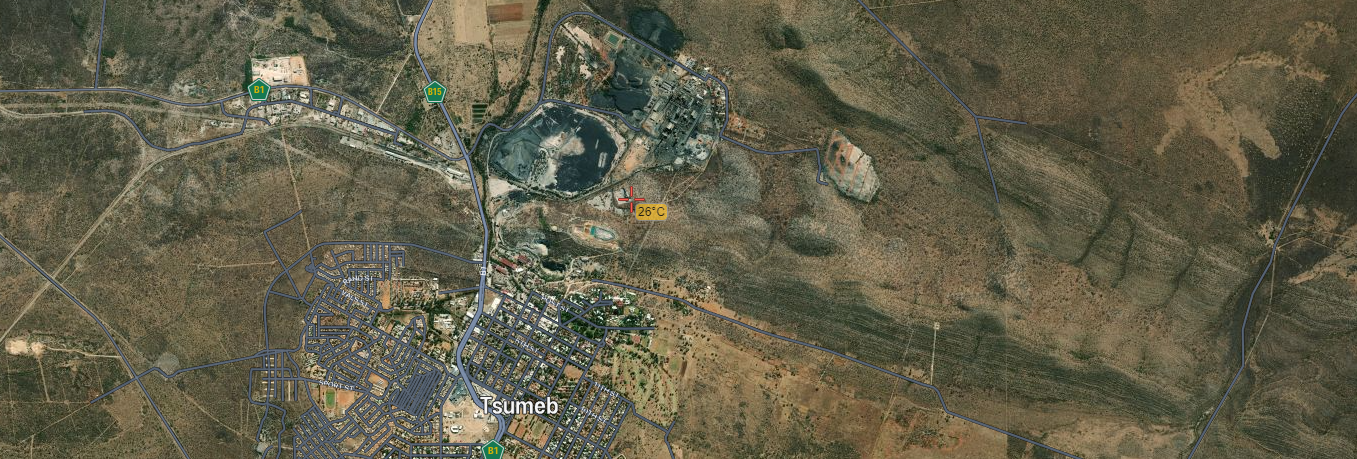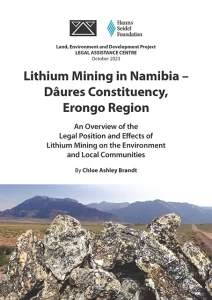
Mining in Namibia
 Mining remains a primary support for the economy in terms of income generation, employment creation, contribution to government revenue and source of foreign direct investments for many developing economies including in the SADC region. According to Walser (2000), mining plays a vital role in the economic development of many countries; it has both social and economic benefits to the communities. Its impact is measured through employment opportunities created and income generation which are necessary conditions for the achievement of socio-economic development.
Mining remains a primary support for the economy in terms of income generation, employment creation, contribution to government revenue and source of foreign direct investments for many developing economies including in the SADC region. According to Walser (2000), mining plays a vital role in the economic development of many countries; it has both social and economic benefits to the communities. Its impact is measured through employment opportunities created and income generation which are necessary conditions for the achievement of socio-economic development.
Mining operations have from its initiation process, adverse environmental impacts. Large pieces of land may be cleared, which often mean very old and valuable trees, shrubs, soil and stone – it could also mean displacing communities that live on these lands and survive off its natural resources. As operations continue, the area being explored is faced with possible water contamination, exposure to toxic materials, loss of biodiversity which include the habitats of plants and animals, air- and sound pollution. Over time, if not environmentally conscious, the mining operations deplete water resources and also degrade any eco-tourism attractions.
Despite these challenges and the world outcry to reduce the need for non-renewable natural resources, the mining sector continues to attract foreign investment. In most instances it is the foreign mining companies that own the resources and the mining operations. In Namibia, the state owns a meagre 10% of the profits. In 2017, Namibia was raised to the 6th from 9th position it occupied in 2016, out of 15 African countries as the most attractive investment destination in Africa alongside South Africa which took 4th position (Fraser Institute, 2017). This does not necessarily mean that the economic growth and development of the country resembles the same achievement. In fact, just like the extreme ratio between the poor and the rich in Namibia, is the value of mining activities to the economic growth of Namibia – both are extremely disproportionate. It is a fact that the communities directly affected by the mining operations are not the primary beneficiaries of any benefits that come from such operations. It is also a fact that if Namibia continues its mining activities without proper measures to ensure protection of the environment, and the well-being of its people, then both will be adversely affected. It will be too late to act responsibly.
Read our full report here.
Also take a look at oil exploration in Namibia.
 Lithium Mining
Lithium Mining
Lithium Mining in the Dâures Constituency – An Overview of the Legal Position and Effects of Lithium Mining on the Environment and Local Communities
Mining is Namibia’s leading economic sector, accounting for about 10% of the country’s GDP every year, and for over 50% of its export revenues. Diamond and uranium oxide mining have been the leading subsectors, and lithium mining has been gaining traction in recent years, due to lithium’s potential in the sphere of renewable energy technologies. Lithium-ion batteries currently have the highest energy density, the longest life cycle and the widest temperature range tolerance, and their self-discharge rates are the lowest among all varieties of rechargeable batteries. Lithium is also used in glass, lubricants and air purifiers. Lithium (from the Greek word lithos, meaning ‘stone’) is a chemical element, which in elemental form presents as a soft silvery-white alkali metal. It is mostly found in deposits of hard rock (pegmatites), this being the case in Namibia, and in brine deposits. After the rocks containing lithium have been extracted from the mine, the minerals containing the lithium are extracted from the rocks, and then the lithium itself is isolated.
Effects on the environment and local communities
Lithium mining can have various effects on the environment and the communities living in the vicinity of the mine. Noted positive effects include the creation of infrastructure such as roads and shopping centres, facilities such as banks and services such as educational programmes. However, there are several risks for the environment and population. Read more here.
 Voices in the dark green: Climate change challenges
Voices in the dark green: Climate change challenges
In many of Namibia’s local rural communities, relationships among people, wildlife, and the natural environment are not only important to spiritual and mental health but necessary to ensure sustainable social and economic development based on natural resource capitalisation. Accelerated climate change, coupled with unsustainable resource extraction, social marginalisation and environmental destruction is disrupting these connections, threatening social networks and knowledge-sharing and exacerbating conditions for poverty.
How to apply for an environmental clearance certificate

Also see online registration here.



